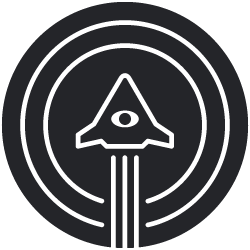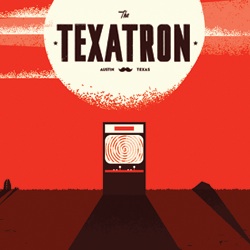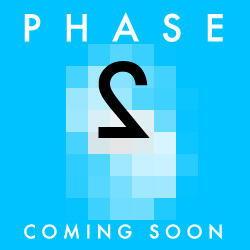ONE SHOT: CELEBRATE CANADA DAY WITH A BONUS #FEZWEDNESDAY
With Canada Day in full swing, Polytron’s Phil Fish gives a bonus #fezwednesday pulled-back work-in-progress trixellated shot of a suspended Fez level. Expect to hear more on the future of Fez in very short order.
See more posts about: Offworld Originals, One Shot, Polytron
FROM KOZIK TO KOOPA: NIKEJERK’S CUSTOM SMORKIN’ TROOPA
The finest heavily-reworked custom I’ve seen in way too long: Nikejerk takes Frank Kozik’s now-ubiquitous Smorkin Labbit, and gives it the full Paratroopa makeover, with Velcro’d on wings and all. Bonus points, too for the tossed in Luigi-Dunny, and the de-luxe packaging to match. [via Destructoid, via Tiff]
See more posts about: Offworld Originals, Toys
VIDEO DEMO: DAVID PERRY SHOWS OFF CLOUD GAMING SERVICE GAIKAI
As Jim recently took a lengthy look into in his Ragdoll Metaphysics column, the “games on demand” concept of cloud gaming gained a serious foothold during this year’s GDC with demonstrations by startups OnLive and Gaikai, and, he says, “suggests that the days of us buying powerful home processing hardware – be it consoles or PCs – could be numbered.”
Today, former Shiny head David Perry uploads this first video demo of Gaikai and plays — in-browser, with no plugins — Spore, Mario Kart 64 and more via “a remote server with a 800 mile round trip to my PC.”
Perry explains most of the details in the video itself, but also posts some more technical information:
* Data travel distance is around 800 miles (round trip) on this demo as that’s where the server is. I get a 21 millisecond ping on that route. My final delay will be 10 milliseconds as I just added a server in Irvine California yesterday, but it’s not added to our grid yet. (So this demo is twice the delay I personally would get, the good news is I don’t notice it anyway.)
* This server is not hosted by a Tier 1 provider, just a regular Data Center in Freemont California. Also, I’m not cheating and using fiber connections for our demos. This is a home cable connection in a home.
* We designed this for the real internet. The video compression codecs change in realtime based on the need of the application (or game), and based on the hardware & bandwidth you have. (For Photoshop we make sure it’s pixel perfect.)
* Our bandwidth is mostly sub 1 megabit across all games. (Works with Wifi, works on netbooks with no 3D card etc.)
Read more about the demo at Perry’s blog post, where he notes that the company “will start buying bulk servers soon and after that, we will begin closed beta in California, so make sure to sign up at: gaikai.com if you want to help us out.”
See more posts about: Offworld Originals
ONE SHOT: A CLOCKWORK ORANGE, THE ATARI 2600 HORRORSHOW
Sensing a theme? Yesterday’s Sims-Dylan artist 9 0 0 0 lets you insert your own Custer’s Revenge/E.T.-cart-burial-site here, but mostly, post-Ludovico, makes us wretch and burp after viddying its horrorshow pixels.
9 0 0 0’s high-brow/low-brow Atari lineup also includes The Unbearable Lightness of Being [!], The Wrath of Kant, Proust’s Remembrance of Things Past, Dostoevsky via Batman and oh man, they just keep going, maybe you should just see his whole photostream.
See more posts about: Offworld Originals, One Shot
GIMME INDIE GAME: MAKE MINE META WITH THIS IS THE ONLY LEVEL & UPGRADE COMPLETE
Between 2007 and 2008 there were two games that were more remarkable for what they did than what they were, and what they were were games doing commentary on the act and experience of playing games themselves.
The first was, of course, You Have To Burn The Rope, which gave you its FAQ, walkthrough, and spoiler-alert straight up front, skipped essentially all of the formalities of the game itself, and then rewarded you with a love-song ode to how brilliant you were at doing what it wouldn’t let you do otherwise. It was a one-off joke, but one smart enough to be selected for and turn heads with a selected as a finalist at the Independent Games Festival.
The second, less indie-industry-shattering game was John ‘jmtb02‘ Cooney’s Achievement Unlocked, a game that rested itself entirely on the Microsoft-created monster of playing for and focusing on the meta-game of satisfying secondary goals.
And so, a year or more on, two more games have emerged that take that meta-gaming to the next level. The first, and newest — again from Cooney (and even starring Unlocked‘s now-beloved elephant), and again telling you what it is up front, is This Is The Only Level (top), which it is, though split up into some 30 takes on the same in-game terrain. Better you discover the best of its surprises for yourself, but it encapsulates some truly devious expectation-undermining throughout, and while perhaps less successful than Unlocked (wholly relying on monotony of its single task to drive its point home, where even the former rewarded careful exploration of its own single level), still will be one of the best 10 minute browser-games of the month.
And, finally, the culmination of all the games above: Antony Lavelle’s Upgrade Complete, from the same author as the monochrome-navigating web series Shift (which just recently came to the iPhone, as well). The trick here: starting the game rewards you with nothing but a blank screen. No developer logo, no title menu, no loading, no nothing, and every bit, piece, and even-better-bit of the game itself has to be purchased by playing.
Obviously, the game makes the minor concession of giving you some cash to spare to get to the ‘game’ itself — a simplistic top-down scrolling shooter — but from there, every, well, upgrade, be it increasing graphic fidelity through generational shifts of 8- to 64-bit, adding sound, credits, and piecing together a deadlier ship to make collecting more money even easier, has to be earned and bought.
Like the above games, it’s excessively linear by design, the game itself not actually being as important as the meta-game, but, like Burn The Rope, its true ending is similarly my-god-aren’t-you-amazing cockle-warming, though this time, probably slightly undercut by the fact that you had to pay them to tell you in the first place. But what could be more meta than that?
This Is The Only Level [John Cooney]
Upgrade Complete [Antony Lavelle]
See more posts about: Gimme Indie Game, Offworld Originals
ONE SHOT: WII FIT, FOR YOUR ATARI 2600
Andrew ‘freakshow6‘ Green morphs Wii Fit into the all-singing, all-dancing Atari 2600 collections of old, and reminds us that all consoles of the past and future really should come in woodgrain. [via Ovejas Eléctricas]
See more posts about: Offworld Originals, One Shot
MICROSOFT RELEASE ROLL-YOUR-OWN-GAME PROJECT KODU TO COMMUNITY GAMES
Slipping in just this side of its promised June release (several hours before the week’s Xbox Live Arcade content made its July 1st debut), Microsoft has officially released its LOGO-like 3D baby’s-first-programming Xbox 360 application, Kodu.
Having given it a very cursory go, I can say that it does — as I mentioned early on — entirely disprove the press’s lazy comparison as “Microsoft’s answer to LittleBigPlanet“: it does nothing to provide a cohesive, freestanding game experience itself, and is instead an entirely modular set of sparse, broken down worlds intended to both teach the new user basic rules of programming logic, and tiny sets of finished “games” (a lite whack-a-mole, a very basic Frogger clone) to prove what can be done as you come to terms with its setup.
What it doesn’t do is ease users into that interface, as much as it does into its principles: while I didn’t have any problem immediately picking up on its sentence-structured syntax, I’m not positive its younger-skewing audience might without supervision.
Despite that, it does succeed at providing both one of the most charming learning environments I’ve ever toyed with, and does allow for a fairly staggering amount of complexity — with even up to four-player multiplayer functionality — if you let it. It’d be an app I returned to often to catch up on the progress made by its audience, though currently sharing levels only takes place on a peer-to-peer basis, and Microsoft haven’t given any indication that might change to a browsable repository anytime soon.
But still, as a research experiment brought fully to life, and as an engaging logic tutor, it’s instantly become one of the highlights of Microsoft’s Community Games initiatives — whether or not it should have broken fully out to Live Arcade is a debate I’ll save for another day.
See more posts about: Offworld Originals, Xbox 360
ONE SHOT: BOB DYLAN’S SIMS-LIFE
Sim-Dylan needs wine, badly, by the artist known only as 9 0 0 0. [via superogatory]
See more posts about: Offworld Originals, One Shot
ONE SHOT: PAPER FOLDED CRYSTAL CASTLES
Vertico’s Puppets‘ Sosima reveals her Crystal Castles-inspired illustration for a heretofore unknown forthcoming book from über, which she says will also include art from “Jon Burgerman, Drew Europeo, Stuntkid, Buff Monster, Kid Gaucho, Angry Woebots, Kanardo, TV Boy and Lysergid.” [via GameSetWatch]
See more posts about: Offworld Originals, One Shot
TWEET (#2408790270)
See more posts about: Offworld Originals






